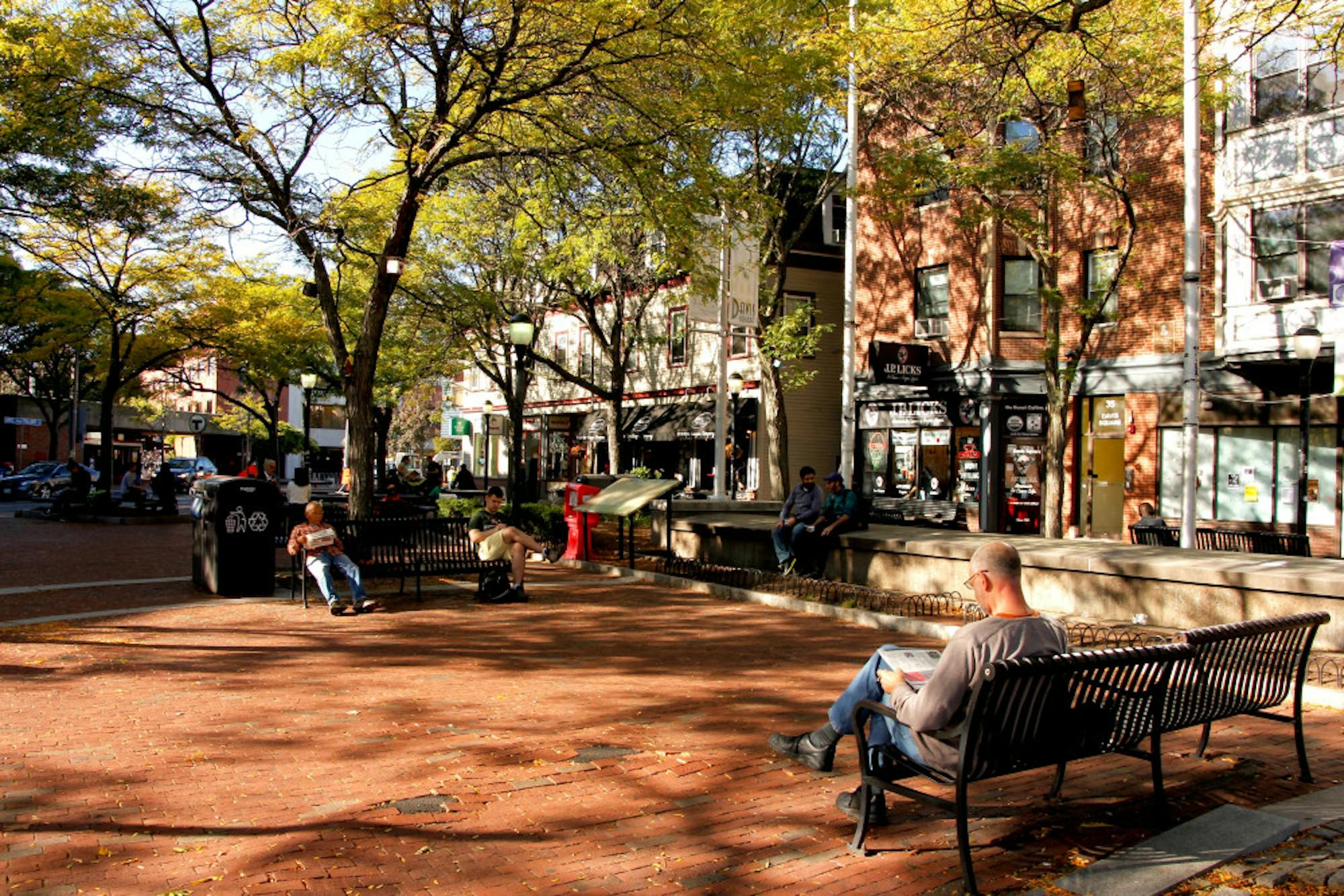A church just a six-minute-walk from Carmichael Hall harbors passageways into alternative worlds. One of the Somerville Toy Camera Festival venues, the Nave Gallery, located in the Clarendon Hill Presbyterian Church, opened to the public from Sept. 8–30 with sentimental photographs testifying to the human fascination with mythical worlds.
This year, the festival included three parallel exhibitions at Nave Gallery, Washington Street Art and the Brickbottom Gallery. The exhibitions at Nave Gallery and Washington Street Art concluded on Sept. 30, while the exhibition at Brickbottom Gallery runs until Oct. 13. According to Susan Berstler, director of the Nave Gallery, the Toy Camera Festival was juried by professional photographer Jennifer Shaw, but the galleries' directors selected the exhibited photographs from a pool of accepted artworks.The term “toy camera” refers to simple, vintage film cameras such as pinhole cameras, Kodak Brownies, Diana cameras and Holga cameras.
Two landscape photographs by Tonee Harbert, featured in the Nave Gallery, convey the artist’s curious longing for realms beyond the reach of non-migrant terrestrial mammals.“Untitled (stair)” (2017) displays a staircase descending into water. Focused closely on the staircase, the camera lens does not extend its vision to include the bounds of the body of water. Although the photo lends the nature of the landscape — be it a lake or a river — to the viewer's imagination, the boundlessness of the water implicitly characterizes the landscape as a metaphorically infinite ocean. The ocean has been a popular subject of fantasy for centuries, hence the classical mythologies about the Sirens and Leviathan, as well as modern films like "Jaws" (1975) and Disney's “The Little Mermaid” (1989).
The ocean, mostly unknown to humans even in this era of science and technology, represents an alternative reality that is enchanting and daunting at once. Harbert’s photograph presents such psychological duality of the ocean in both its color scheme and composition. The staircase, as an architectural structure that literally leads the way, lures the viewer underwater. Despite characterizing the ocean as an inviting subject, the photograph subtly warns the viewer that the ocean is also to be feared. The water in the picture reflects the brightness of the sky, creating a sharp contrast with the almost monochromatically dark staircase and rock. The absolute distinction in color between water and land suggests that the oceanic realm is nothing like its terrestrial counterpart — the motherly niche of humans for hundreds of centuries.
"Untitled (pathway)" (2018), a Harbert photo exhibited next to “Untitled (stair),” reflects two other commonly imagined locations of utopia: the faraway and the sky. The photograph depicts a wooden boardwalk extending from the photographer’s standpoint to the horizon.Many religious descriptions of a perfect life feature natural elements, such as trees in the Garden of Eden and flowing rivers in Islam's Jannah. The nomadic traditions embedded in humans' cultural and evolutionary psyche endure today in a longing for distant lands. The long trail in Harbert’s “Untitled (path)” traces this storied imagination of remote landscapes. The photo attests to what is probably the most metaphorized cosmic realm: the sky. The picture’s composition plays with an optical illusion that the very end of the disappearing trail seems to touch the sky, symbolically leading its passengers to heaven.
The mythological theme is also manifested in photographs of man-made entrances into the afterlife.“In Memory of Elizabeth Reed” (2003/2018), a photograph by Nancy Marshall, portrays part of a tomb complex. At the center of the composition is a pseudo-door, which assumes the form of an armed arch but is blocked by a wall of bricks. This impractical structure attests to people’s desire to connect with the world beyond life, as inaccessible as it is in reality. The gentle yet explicit beams of light that permeate almost three-fourth of the composition serve as additional embodiments of belief in a supernatural alternative world. The light beams resemble strips of milky white silk. Their semi-transparent hue renders them ephemeral, and their abstract form make them indescribable. In a way, the light beams are just like the afterlife, which is believed to exist yet remains physically ungraspable and scientifically unprovable.
Compared to precise modern digital cameras, toy cameras generate more imperfections and give photographers less control over their products. Nevertheless, some photographers at the Somerville Toy Camera Festival have learned to embrace and to take advantage of the accidental surprises that toy cameras bestow on their photographs, and to use those unintentional marks to express the ancient human curiosity for the mysterious.
2018 Somerville Toy Camera Festival explores history of curiosity with vintage machines

Davis Square is pictured on Oct. 19, 2017.
Summary
The 2018 Somerville Toy Camera Festival embraced the accidental surprises in their toy camera photographs, expressing the ancient human curiosity for the mysterious.
3.5 Stars





